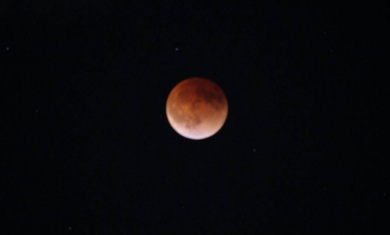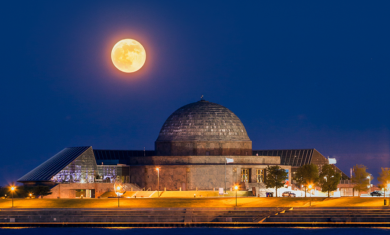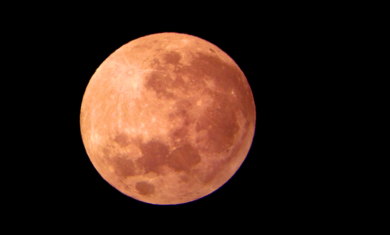Types of Eclipses: Lunar Eclipses and Solar Eclipses Explained
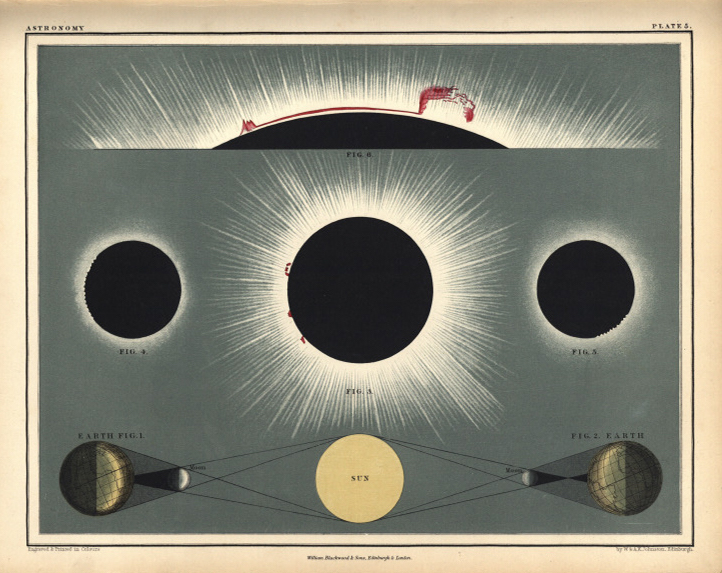
Header Image: Eclipse of the Sun illustration from the Adler Planetarium’s Collections
Editor’s Note: This blog was originally published in April 2021 and was updated and republished with more current information.
There are several topics in astronomy that get lots of people excited: naked-eye visible comets, bright planets, auroras…but eclipses are generally at the top of the observing list for many of us. We love seeing the Sun or Moon look different from how they normally appear. Keep reading to learn more about the two types of eclipses: lunar and solar.
Lunar Eclipses Explained
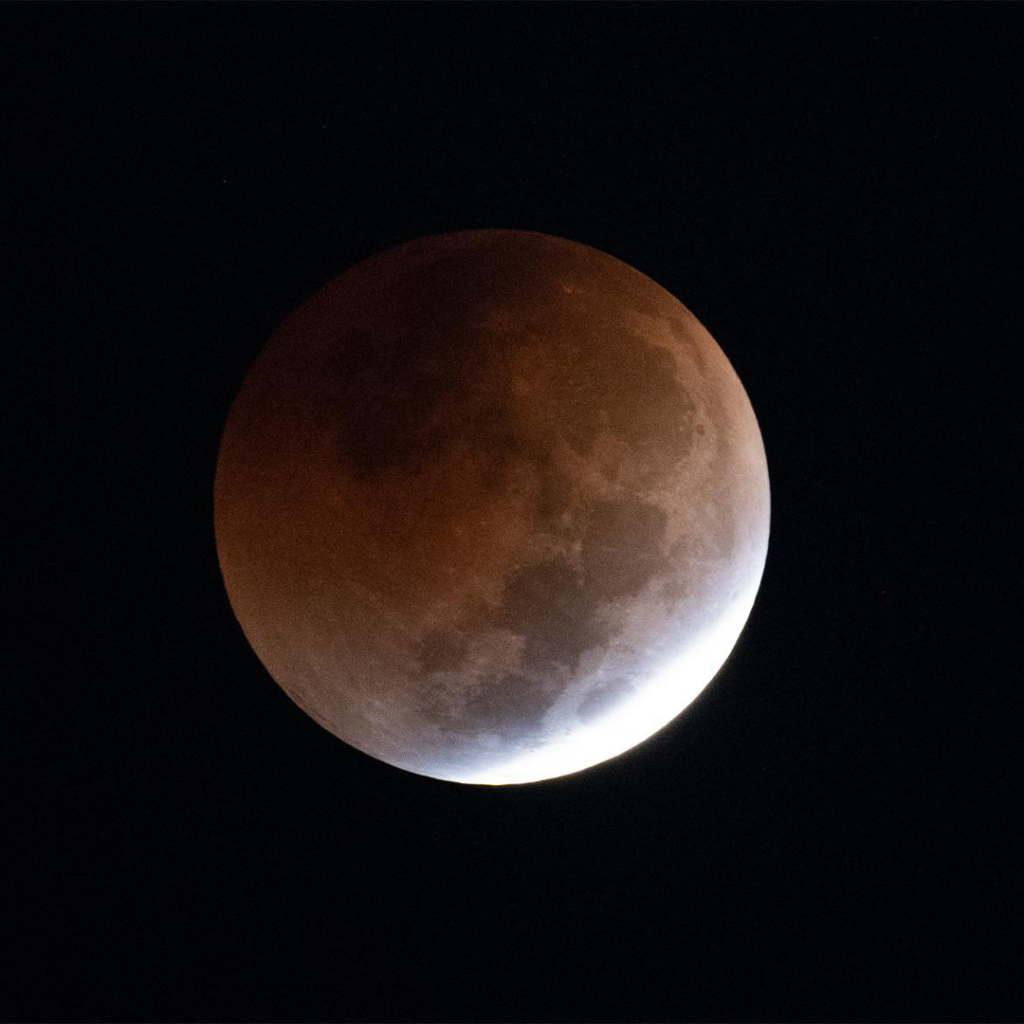
What causes a lunar eclipse? Sunlight falls on our Earth, and the Earth’s shadow is cast into space behind it—just like when the sunlight falls on you, and your shadow is cast behind you. If the Moon happens to pass through the Earth’s shadow, then we’ll see the Moon appear to darken. We call this a lunar eclipse.
How Eclipses Occur
A lunar eclipse can only happen at the phase known as full Moon, when the arrangement in space is a line between the Sun, Earth, and Moon when the Moon is opposite the Sun in our sky. While a full Moon happens every time the Moon orbits the Earth—12 or 13 times each calendar year—we don’t get a lunar eclipse at each full Moon phase. Why? The Moon’s orbit with respect to the Earth is tilted a bit. Because of this tilt, usually the Moon passes a bit above or below the Earth’s shadow at full Moon. When the lineup is exactly right and the Moon’s orbit intersects the Earth’s shadow, the Moon passes through the shadow, and we see the Moon turn brown, red, orange, or gray.
Lunar eclipses can be penumbral, partial, or total, depending on how much of the Moon passes through the lighter outer part of Earth’s shadow or the darker inner part of Earth’s shadow. If the Moon passes through the lighter shadow area—known as the penumbra—this is a penumbral lunar eclipse. If the Moon only passes through part of the darkest shadow area—known as the umbra—this is a partial lunar eclipse. If the Moon passes completely into the darkest shadow area of the Earth’s shadow, this is a total lunar eclipse.
Don’t have a telescope at home? Observe astronomical events virtually with the Adler’s astronomy educators. We host regular episodes of Sky Observers Hangout, so be sure to subscribe to our YouTube channel for updates.
Solar Eclipses Explained
When the Moon’s orbit is aligned just right for a lunar eclipse, it also means it’s aligned just right for a solar eclipse. A lunar eclipse always occurs about two weeks before or two weeks after a solar eclipse. The same parts of Earth don’t necessarily get to see both parts of the lunar-solar eclipse set.
How Do Moon Phases Affect Solar Eclipses?
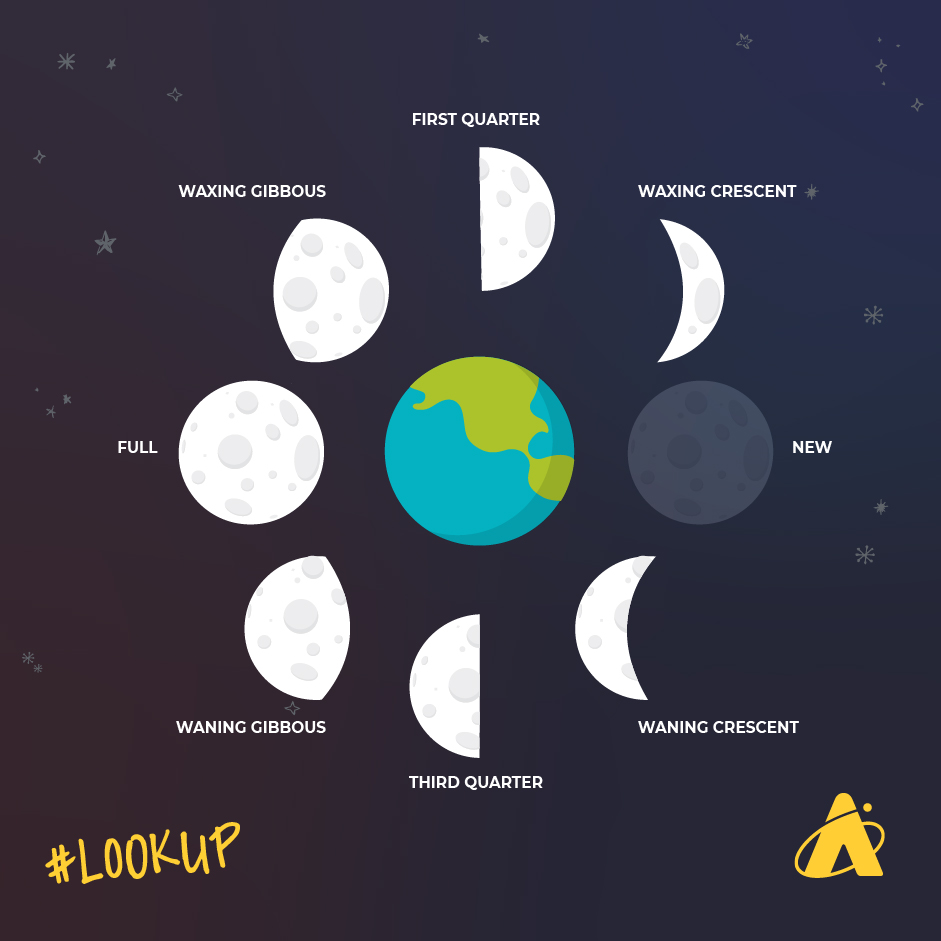
A solar eclipse can only happen at the phase known as new Moon, when the arrangement in space is a line between the Sun, Moon, and Earth. When the lineup is exactly right and the Moon’s orbit intersects the Sun’s position in our sky, the Moon partly or totally covers the Sun.
Solar eclipses can be partial or total, depending on whether the Moon covers part or all of the Sun. If the Moon is close enough to Earth in its oval-shaped orbit, it will be big enough to completely cover the Sun, but when the Moon is farther from the Earth, the size it appears in the sky is not large enough to cover the Sun. When the Moon is too far from Earth to cover the Sun completely, we call this an annular eclipse. The word annular comes from the Latin word annulus, which means ring, referring to the ring of Sun that is left around the Moon during this type of eclipse.
You will always need proper solar viewing glasses to safely view the Sun. Do not look directly at the Sun without certified solar eye protection. If you have glasses or viewers left over from a previous solar eclipse, only use them if you have stored them away from light, heat, and humidity and you are certain they do not have any pinholes or punctures. If you aren’t sure if your viewers are safe, when in doubt, buy new ones.
Learn More About Sky Observing From Our Astronomy Educators
Watch exclusive live episodes of Sky Observers Hangout! With our astronomy educators you’ll learn how to observe upcoming cosmic happenings, enhance your astrophotography skills, and see celestial objects through a telescope virtually including all types of eclipses. If you are not able to tune in live with us, you can watch recaps of the episodes on our YouTube channel.
Tour the night sky with Skywatch Wednesday host Nick who uses cutting-edge visualizations, NASA images, and astrophotography to show you what you can see in the night sky.
Need some space in your inbox? Sign up for our emails to get the latest breaking space news, Adler happenings, and updates for upcoming live Sky Observer Hangout episodes.




